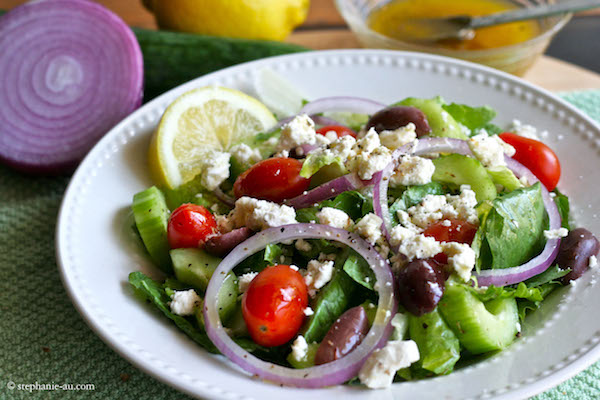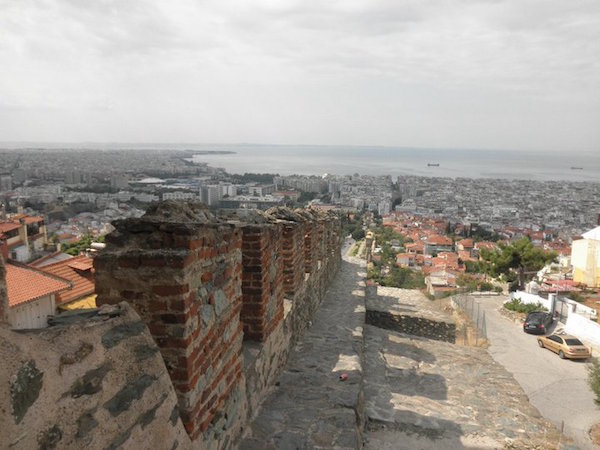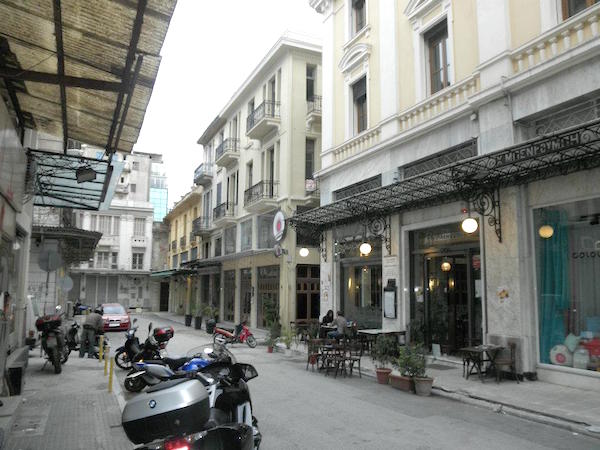Thessaloniki Comfort Food
“Both of us were now full-on hungry, and hot in the midday Macedonian sun, and we retreated into a stoa, one of the arcaded pedestrian streets which define Europe’s great cities. Here in Thessaloniki, a stoa typically has a feel part Viennese, part Ottoman. The elegance of the past confronts a present tense of peeling posters, graffiti, city grime, and vacant, shuttered shops. The economic crisis hit Thessaloniki harder and earlier than it did Athens, and it has always had to play second fiddle to the capital, though Thessaloniki is far more elegant than Athens.”—Alexander Billinis
Roaming East Roman
By Alexander Billinis

CHICAGO Illinois—(Weekly Hubris)—4/25/2016—It had been a long day and, as is often the case when traveling in Greece, a frustrating one. No doubt for my then six-year-old son, sweating in his new PAOK soccer shirt in the late August heat, it had been even more frustrating. After enduring a KTEL bus trip from Kavala to Thessaloniki the day before, he’d been dragged by his father through the Byzantine monuments of Greece’s northern “capital” and then on to drinks, meze (starters), and dinner in the Ladadika district: my little boy was frazzled.
But Tata (Serbian for “Daddy,” as I was then and am still called) just had to take him up to Ta Kastra the very next morning. A visit to Thessaloniki’s walled Upper Town, called “The Castles” locally, was another stop in my ongoing crusade to lay hands on the analog monuments of our shared history. And by this I mean literally laying Billinis hands on stone, to feel and receive the energy and wisdom of the ages. (It’s just one of my many foibles—others to be revealed in this and future columns.)

The “laying on of hands” practice got its start near our home in Athens, where Kapodistriou Street cleaves Beverly-Hillsy Philothei from the more proletarian neighborhood we lived in, Nea (New) Philothei. As one goes west, approaching Nea Ionia (a former refugee camp turned suburb), the remnants of a Roman aqueduct attempt to bridge the torrent of traffic that is Kapodistriou. Here, I took my then-three- year-old son to touch the masonry, and the ritual was born: no doubt my son, a budding teenager these days, is happy we now live in Chicago, if for no other reason than that ancient masonry is scarce in these parts.
Back in Thessaloniki, masonry of various ages redolent with plenty of history abounded, and so we just had to go up to the Upper Town to “touch the monuments.” At some point, given that we’d started off early after retiring late the night before, and it was still morning, my son insisted on a break. For us, this could mean only one thing, particularly in Europe: a café. Such establishments are of course ubiquitous in Greece and, often as not, one of the country’s greatest delights (the list of delights being rather long in Greece). In this case, though, I experienced a rare disappointment—a four-euro double espresso that tasted worse than US gas station coffee.
Giddy from hunger and an insult to my tastebuds (and wallet), I launched into a verbal battled with the Neohellenic (Greek Millennial) waiter. This escalated to include the rather beefy proprietor of the café before deescalating rapidly, like most Greek arguments. Leaving the café, my son was still lobbying for food, and would not submit to the long walk down to the city, each of us with a rather large backpack. I hailed a cab, which normally initiated a negotiation in Greece but, in 2010, Year Two of the Austerity Era, a passing cab was only too happy to comply.
He dropped us off near Egnatia Street, the city’s heart, named for a Roman road which connected Thessaloniki, Byzantium’s “Second City,” with “The City,” known today as, among other names, Istanbul. Both of us were now full-on hungry, and hot in the midday Macedonian sun, and we retreated into a stoa, one of the arcaded pedestrian streets which define Europe’s great cities. Here in Thessaloniki, a stoa typically has a feel part Viennese, part Ottoman. The elegance of the past confronts a present tense of peeling posters, graffiti, city grime, and vacant, shuttered shops. The economic crisis hit Thessaloniki harder and earlier than it did Athens, and it has always had to play second fiddle to the capital, though Thessaloniki is far more elegant than Athens.

This stoa was cool despite the summer heat and, several shops in, beneath the arcade, small wooden tables and rattan chairs heralded a taverna. No time to argue: my son begged for food, and we had several hours to kill before our all-night bus to Serbia. We walked in to a gruff greeting from a waiter in a “wife-beater” t-shirt and apron, a few interior tables with disposable paper tablecloths, some faded pictures on the wall, a calendar, and a grimy kitchen out back. Of course, there was the obligatory glass food display case, and no menu but what was in front of you.
The visually-expressed bill of fare covered: macaroni with meat sauce, giant navy beans with tomato sauce, roasted potatoes, and some other simple home-made dish. We signaled for two portions of navy bean with potatoes, and asked for a village salad (cucumber, onion, feta, tomato, and peppers) . . . plus a Fanta for my boy, and a half- liter of hima (from the barrel) wine for me.
Two plates of beans arrived, well-oiled, along with a horiatiki, or Greek salad, one of nature’s most sublime gifts, and a copper cylinder of cheap, sulfite-free, homemade wine a few degrees above freezing. On the slightly rickety table lay three plates, two with large beans the color of a gold-red sunset, bathed in an oily tomato base with plenty of onions, crowded by oven-baked potatoes. Fresh bread helped to guide all and sundry onto our forks. Then, of course, the third plate hosted the Greek salad, a festival of colors, red and bright green tomatoes and peppers, with the white of the feta crowning the light green of the cucumber, which tastes nowhere else as it does in Greece. The wine was a golden blond, no doubt from a vineyard just a few kilometers outside the city.
It was an elemental and eternal Greek meal, many of its ingredients as timeless as Greece itself, but also strangely modern: a healthy meal, plant-based, and Green, with all ingredients sourced very locally. Though none of the patrons could be mistaken for crunchy, granola types, the bill of fare might have inspired an upscale clientele in Los Angeles.
But this was Greece, and here, this was comfort food, the food of the poor, but with great nutritional value (which accounts for the Greeks’ longevity and quality of life—in spite of anything the 21st century can throw at or withhold from the country). I thought of my late father, who would have loved both the meal and the surroundings, and of times, long past, when he would pull me into such tavernes in Pireaus, his hometown, to eat the fare of the common people, his eyes welling up as he remembered lunches and dinners of the past. I thought of meals in Athens, where we lived for two years, and where such tavernes were now crowded out by hipper establishments.
But tavernes such as that on the Thessaloniki stoa will always survive in Greece and, somehow, upon leaving our wobbly table, full and happy, I even felt confident that Greece would survive.

